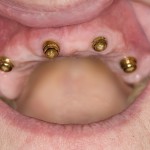
Flapless implant placement where dental implants are inserted through the mucosal tissues without raising a mucoperiosteal flap have been introduced as they are considered to minimize the possibility of postoperative peri-implant tissue loss and to overcome the challenge of soft tissue management during or after surgery. The aim of this review was to investigate whether there are any positive effects of flapless implant insertion surgery on implant failure rates, postoperative infection, and marginal bone loss in comparison with the more traditional open flap technique.
Searches were conducted in PubMed, Web of Science, and the Cochrane Oral Health Group Trials Register. Manual searched were carried out in the journals; British Journal of Oral and Maxillofacial Surgery, Clinical Implant Dentistry and Related Research, Clinical Oral Implants Research, European Journal of Oral Implantology, Implant Dentistry, International Journal of Oral and Maxillofacial Implants, International Journal of Oral and Maxillofacial Surgery, International Journal of Periodontics and Restorative Dentistry, International Journal of Prosthodontics, Journal of Clinical Periodontology, Journal of Dental Research, Journal of Oral Implantology, Journal of Craniofacial Surgery, Journal of Cranio-Maxillofacial Surgery, and Journal of Maxillofacial and Oral Surgery, Journal of Oral and Maxillofacial Surgery, Journal of Periodontology, and Oral Surgery Oral Medicine Oral Pathology Oral Radiology and Endodontology.
Human clinical studies comparing implant failure (i.e complete loss) rates in any group of patients receiving titanium dental implants by a flapless surgical procedure versus the open flap technique. Study selection was carried out by 3 reviewers and quality assessment undertaken.
- 23 studies were included; 10 randomised controlled trials, 7 controlled clinical studies and 6 retrospective studies.
- 5 studies were considered to be at low risk of bias, 2 at moderate risk and 16 high risk.
- Meta-analysis of 23 studies found a statistically significant increase in failure for flapless procedures RR = 1.75 (95% CI 1.07-2.86; p = 0.03).
- However, a sensitivity analysis revealed differences when studies of high and low risk of bias were pooled separately.
- For low risk studies (n=5); RR =1.84 (95% CI 0.44–7.77; p = 0.49)
- No apparent significant effects of flapless technique on the occurrence of postoperative infection (RR 0.96, 95% CI 0.23-4.03) or on the marginal bone loss (MD -0.07 mm, 95% CI -0.16-0.03) were seen.
The authors concluded
The difference between the procedures (flapless vs. flapped) statistically affected the implant failure rates. However, the results must be interpreted carefully, as a sensitivity analysis revealed differences when the groups of studies of high and low risk of bias were pooled separately. No statistically significant effects of open flap surgery or flapless surgery on the occurrence of postoperative infection and on the marginal bone loss were observed.
Comment
There have been two other recent systematic reviews, Wu et at and Lin et al that have addressed issues relating to flapless implants and this was also tackled by a Cochrane review by Esposito et al in 2010 . In 2010 Esposito et al indicated that there was weak evidence suggesting that flapless implant placement was feasible. Nine of the studies included in this review have been published since 2010 some of which may be included in updates to the Cochrane review. While the overall summary of this review suggests that flapped approach results in fewer failures restricting the analysis to the higher quality found no statistical differences. As the authors note the results need to be interpreted with caution and more high quality randomised controlled trials with larger patient samples are required.
Links
Chrcanovic BR, Albrektsson T, Wennerberg A. Flapless versus Conventional Flapped Dental Implant Surgery: A Meta-Analysis. PLoS One. 2014 Jun 20;9(6):e100624. doi: 10.1371/journal.pone.0100624. eCollection 2014. PubMed PMID: 24950053; PubMed Central PMCID: PMC4065043.
Xu L, Wang X, Zhang Q, Yang W, Zhu W, Zhao K. Immediate versus early loading of flapless placed dental implants: A systematic review. J Prosthet Dent. 2014 May 12. pii: S0022-3913(14)00135-8. doi: 10.1016/j.prosdent.2014.01.026. [Epub ahead of print] Review. PubMed PMID: 24831750.
Lin GH, Chan HL, Bashutski JD, Oh TJ, Wang HL. The effect of flapless surgery on implant survival and marginal bone level: a systematic review and meta-analysis. J Periodontol. 2014 May;85(5):e91-103. doi: 10.1902/jop.2013.130481. Epub 2013 Oct 23. PubMed PMID: 24147846.
Esposito M, Maghaireh H, Grusovin MG, Ziounas I, Worthington HV. Interventions for replacing missing teeth: management of soft tissues for dental implants. Cochrane Database of Systematic Reviews 2012, Issue 2. Art. No.: CD006697. DOI: 10.1002/14651858.CD006697.pub2.
